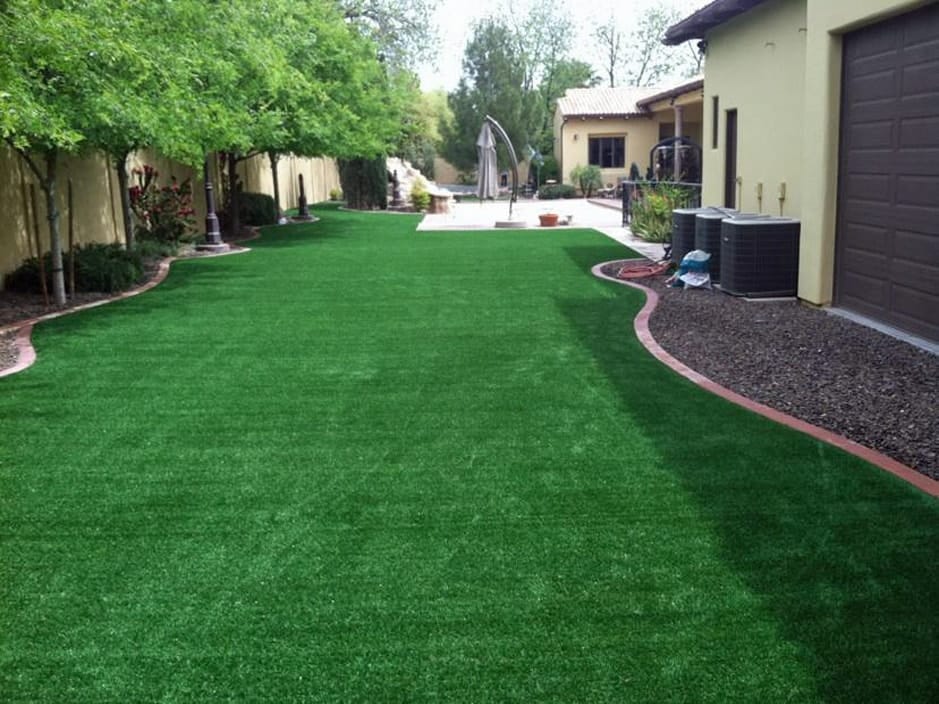How To Install Artificial Grass On Any Type Of Soil In Vista?
 Artificial grass has become increasingly popular as a low-maintenance alternative to natural grass. It provides a lush, green lawn all year round without the hassle of constant mowing, watering, and fertilizing. One of the key advantages of artificial grass is its versatility, as it can be installed on various types of soil. Whether your soil is sandy, clayey, or loamy, here are five tips to help you successfully install artificial grass on any type of soil.
Artificial grass has become increasingly popular as a low-maintenance alternative to natural grass. It provides a lush, green lawn all year round without the hassle of constant mowing, watering, and fertilizing. One of the key advantages of artificial grass is its versatility, as it can be installed on various types of soil. Whether your soil is sandy, clayey, or loamy, here are five tips to help you successfully install artificial grass on any type of soil.
- The first step to a successful artificial grass installation is proper ground preparation. Regardless of your soil type, you should start by removing any existing grass, weeds, or debris from the area. Use a shovel or a turf cutter to get rid of the old grass and vegetation. Next, ensure that the ground is level and free of bumps or dips. You may need to use a soil compactor to compact the soil and create a firm, even surface. For sandy soil, consider adding a weed barrier fabric before installation to prevent weeds from growing through the turf. For clayey soil, consider adding a layer of sand to improve drainage and prevent the soil from becoming too compacted over time. For loamy soil, you may only need minimal adjustments to ensure a level surface.
- Once your ground is properly prepared, it’s essential to install a suitable base for your artificial grass. Most installations use a base of crushed stone or decomposed granite. This base material provides excellent drainage, stability, and support for the turf. For sandy soil, a thicker base layer may be necessary to ensure proper stability, while clayey soil may require less base material. Ensure that the base is evenly distributed and compacted to create a solid foundation for the artificial grass. A well-constructed base will help prevent sinking, unevenness, and other issues over time.
- Selecting the appropriate type of artificial grass for your specific soil and climate conditions is crucial. Different turf varieties have varying levels of durability, water drainage, and heat resistance. For instance, some types are better suited for hot and arid climates, while others excel in areas with heavy rainfall. Consult with a professional or the manufacturer to determine the best turf variety for your specific needs. They can guide you in selecting the right pile height, density, and color to achieve the desired look and performance for your artificial lawn.
- Proper drainage is essential for artificial grass installations, regardless of soil type. To ensure good drainage, install a layer of perforated drainage pipes or pipes with a geotextile fabric wrapped around them. These pipes will help channel excess water away from the surface and prevent puddling, especially in areas with heavy rain or clayey soil. Additionally, use a high-quality infill material, such as silica sand or rubber granules, to improve drainage and provide stability to the turf. Proper drainage is crucial for maintaining the longevity and appearance of your artificial grass.
- While DIY installation is possible, it’s highly recommended to hire a professional for artificial grass installation, especially if you’re dealing with challenging soil conditions. Professionals have the knowledge, experience, and equipment to ensure that the turf is properly installed and that the sub-base and drainage systems are correctly set up. A professionally installed artificial lawn will not only look better but also last longer.
FAQs
Can I Install Artificial Grass On Clayey Soil?
Yes, you can install artificial grass on clayey soil, but it requires proper preparation. Adding a layer of sand to improve drainage and using a suitable base material are essential steps to ensure a successful installation on clayey soil.
Is Artificial Grass Suitable For Areas With Heavy Rainfall?
Yes, artificial grass can be installed in areas with heavy rainfall. Proper drainage systems, including perforated pipes and high-quality infill material, can effectively manage excess water and prevent puddling.
Can I Install Artificial Grass Myself, Or Should I Hire A Professional?
While DIY installation is possible, it’s recommended to hire a professional for the best results, especially if you have challenging soil conditions. Professionals have the expertise to ensure a proper installation, which can extend the lifespan and appearance of your artificial lawn.
Conclusion
Installing artificial grass on any type of soil requires careful preparation, the right materials, and attention to drainage. By following these five tips and seeking professional guidance when needed, you can enjoy a beautiful, low-maintenance artificial lawn that thrives in various soil conditions. Whether your soil is sandy, clayey, or loamy, artificial grass can provide a lush and durable alternative to natural grass, enhancing the beauty and functionality of your outdoor space. For more information, contact Artificial Turf Vista at (760) 316-1167.

